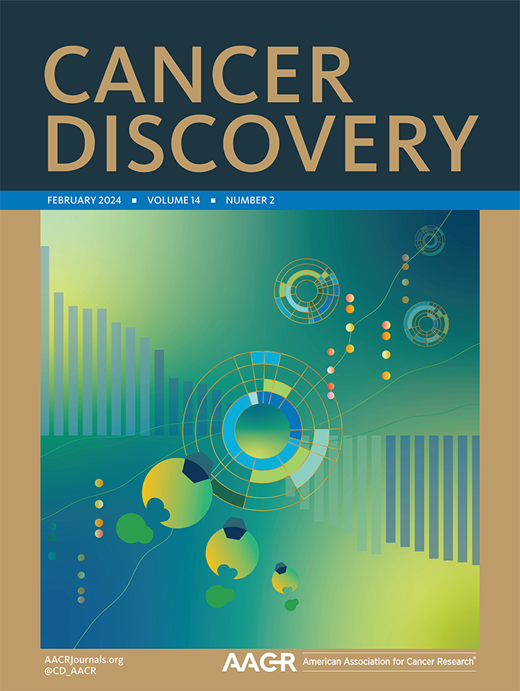染色体外 DNA 生物发生和基因组 DNA 修复的不同途径
IF 29.7
1区 医学
Q1 ONCOLOGY
引用次数: 0
摘要
染色体外DNA(ecDNA)上的癌基因扩增是癌症中普遍存在的驱动事件,但我们对ecDNA如何形成的了解却很有限。在这里,我们将基于CRISPR的ecDNA诱导方法与新形成的ecDNA的广泛表征结合起来,研究它们的生物发生过程。我们发现,无论三维基因组背景如何,DNA环化都是高效的,800kb、1 Mb 和 1.8 Mb ecDNA 的形成率都达到或超过了 15%。我们发现非同源末端连接和微同源介导的末端连接都有助于ecDNA的形成,而抑制DNA-PKcs和ATM对ecDNA的形成具有相反的影响。EcDNA和相应的染色体切除疤痕的形成速度明显不同,对DNA-PKcs和ATM抑制的反应也不同。综上所述,我们的研究结果支持蜕变DNA形成模型,在该模型中,双链断裂末端与其合法连接伙伴解离,然后非法末端连接形成蜕变DNA和切除疤痕。本文章由计算机程序翻译,如有差异,请以英文原文为准。
Disparate Pathways for Extrachromosomal DNA Biogenesis and Genomic DNA Repair.
Significance: Our study harnesses a CRISPR-based method to examine ecDNA biogenesis, uncovering efficient circularization between double-strand breaks. ecDNAs and their corresponding chromosomal scars can form via nonhomologous end joining or microhomology-mediated end joining, but the ecDNA and scar formation processes are distinct. Based on our findings, we establish a mechanistic model of excisional ecDNA formation.
求助全文
通过发布文献求助,成功后即可免费获取论文全文。
去求助
来源期刊

Cancer discovery
ONCOLOGY-
CiteScore
22.90
自引率
1.40%
发文量
838
审稿时长
6-12 weeks
期刊介绍:
Cancer Discovery publishes high-impact, peer-reviewed articles detailing significant advances in both research and clinical trials. Serving as a premier cancer information resource, the journal also features Review Articles, Perspectives, Commentaries, News stories, and Research Watch summaries to keep readers abreast of the latest findings in the field. Covering a wide range of topics, from laboratory research to clinical trials and epidemiologic studies, Cancer Discovery spans the entire spectrum of cancer research and medicine.
 求助内容:
求助内容: 应助结果提醒方式:
应助结果提醒方式:


